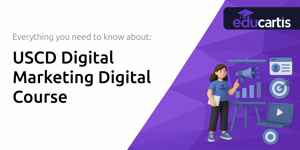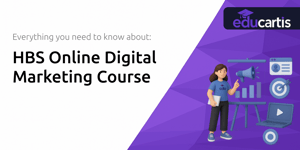In an era where a swipe or tap can translate into real-world spending, teens have unprecedented purchasing power and influence. But many lack the tools to navigate complex financial decisions. Enrolling in comprehensive online finance courses equips teens with knowledge and confidence they need to build a foundation for lifetime prosperity.
This article explores why early financial education matters, highlights leading online programs, and provides actionable strategies for teens, parents, and educators to foster lasting money habits.
The Growing Need for Financial Literacy among Teens
Today’s teens make purchases on TikTok, use mobile payment apps, and even influence major family buys like cars and vacations. Yet when faced with credit terms, many underestimate risks. Nearly half of teens surveyed believe an 18% interest rate is easily manageable over time, illustrating a dangerous gap in understanding. Meanwhile, only one-third of teens save consistently, and a staggering 80% have never heard of FICO credit scores or cannot explain them.
These statistics underscore a pressing demand for structured financial education. With only 31–45% of high schoolers having access to personal finance courses, and just 22.7% guaranteed course availability, the majority of teens are left to learn through trial and error—often at high cost.
Exploring Online Personal Finance Courses
Online platforms offer flexible solutions to bridge this educational gap. Courses range from free, self-paced modules to paid certificate programs. They cater to diverse learning styles, budgets, and schedules, making financial literacy accessible to every teen.
- Free Digital Programs: Platforms like EVERFI and the Online Classroom Curriculum (OCC) provide interactive lessons covering budgeting, credit basics, and savings strategies at no cost.
- Government-Sponsored Resources: MyMoney.gov, FINRA’s Investor Education Foundation, and CFPB youth initiatives offer engaging content and real-world scenarios to reinforce learning.
- Certificate Courses: Prestigious programs such as USC Pre-College Online deliver a structured, in-depth experience with instructor feedback and recognized credentials, ideal for motivated teens.
Many of these courses offer both English and Spanish tracks, ensuring broader reach and inclusivity. Self-paced modules allow teens to learn at their convenience, balancing school and extracurricular commitments.
Key Topics Covered and Course Formats
Effective finance courses blend theory with practice, empowering teens to apply lessons immediately. Core topics include:
- Consumer Skills: How to research, compare, and evaluate products before purchasing.
- Budgeting: Setting realistic goals, tracking income, and controlling impulse spending.
- Credit and Debt Basics: Understanding interest rates, loan types, and responsible borrowing.
- Savings and Retirement Planning: Starting early to harness compound interest for long-term gains.
- Insurance Fundamentals: Recognizing the role of insurance in risk management for health, auto, and property.
Course delivery varies:
- Digital Lessons: Short, interactive modules with videos, quizzes, and real-life scenarios.
- Live Webinars: Expert-led sessions offering Q&A opportunities and guest speakers.
- Assignments and Projects: Practical tasks like creating personal budgets or mock investment portfolios.
Summary of Key Statistics
Maximizing the Benefits of Early Financial Education
Early exposure to financial principles yields immediate and lifelong advantages. Teens who learn budgeting and saving in high school report stronger money discipline in college and first jobs. They are less likely to fall victim to predatory lending and often graduate with healthier credit profiles.
Moreover, instilling long-term planning habits promotes mental well-being by reducing financial anxiety. When teens understand how to allocate resources effectively, they feel empowered to pursue academic goals without the burden of unexpected debts.
Overcoming Challenges and Gaps
Despite growing interest, significant hurdles remain. Inconsistent course availability means some districts lack certified instructors or funding. Even when courses exist, teens may struggle to retain abstract financial concepts without hands-on reinforcement.
To address these gaps, parents and educators should:
- Model real-world money decisions, such as budgeting household expenses and discussing bills openly.
- Use community resources like Junior Achievement and local workshops to supplement formal courses.
- Encourage practical projects—like opening savings accounts or tracking spending—to reinforce classroom lessons.
Next Steps and Resources for Teens and Parents
Ready to take control of your financial future? Here are actionable steps:
- Enroll in a free program: Start with EVERFI or OCC to gauge your interest.
- Join government initiatives: Explore MyMoney.gov and CFPB youth resources for interactive tools.
- Consider certificate courses: If you seek college credit or a formal credential, USC Pre-College Online is a top choice.
- Engage parents and mentors: Schedule regular check-ins to review budgets and goals together.
By combining structured coursework with real-life practice, teens can transform financial literacy from an abstract concept into a tangible skill set. The journey to financial success begins today—equip yourself with knowledge, build strong habits, and watch your confidence and opportunities grow.
References
- https://www.edweek.org/teaching-learning/teaching-personal-finance-to-teens-in-the-age-of-online-gambling/2025/04
- https://jausa.ja.org/news/press-releases/more-teens-are-participating-in-financial-literacy-courses-but-gaps-in-learning-evident-according-to-new-survey
- https://precollege.usc.edu/online-programs/finance-from-personal-literacy-to-global-markets/
- https://www.occ.treas.gov/publications-and-resources/publications/community-affairs/financial-literacy-updates/financial-literacy-1st-quarter-2025.html
- https://jagkc.org/68-percent-teens-want-financial-education/
- https://everfi.com/courses/k-12/financial-literacy-high-school/
- https://www.consolidatedcredit.org/financial-news/financial-literacy-for-teens-preparing-the-next-generation/
- https://www.annuity.org/financial-literacy/










